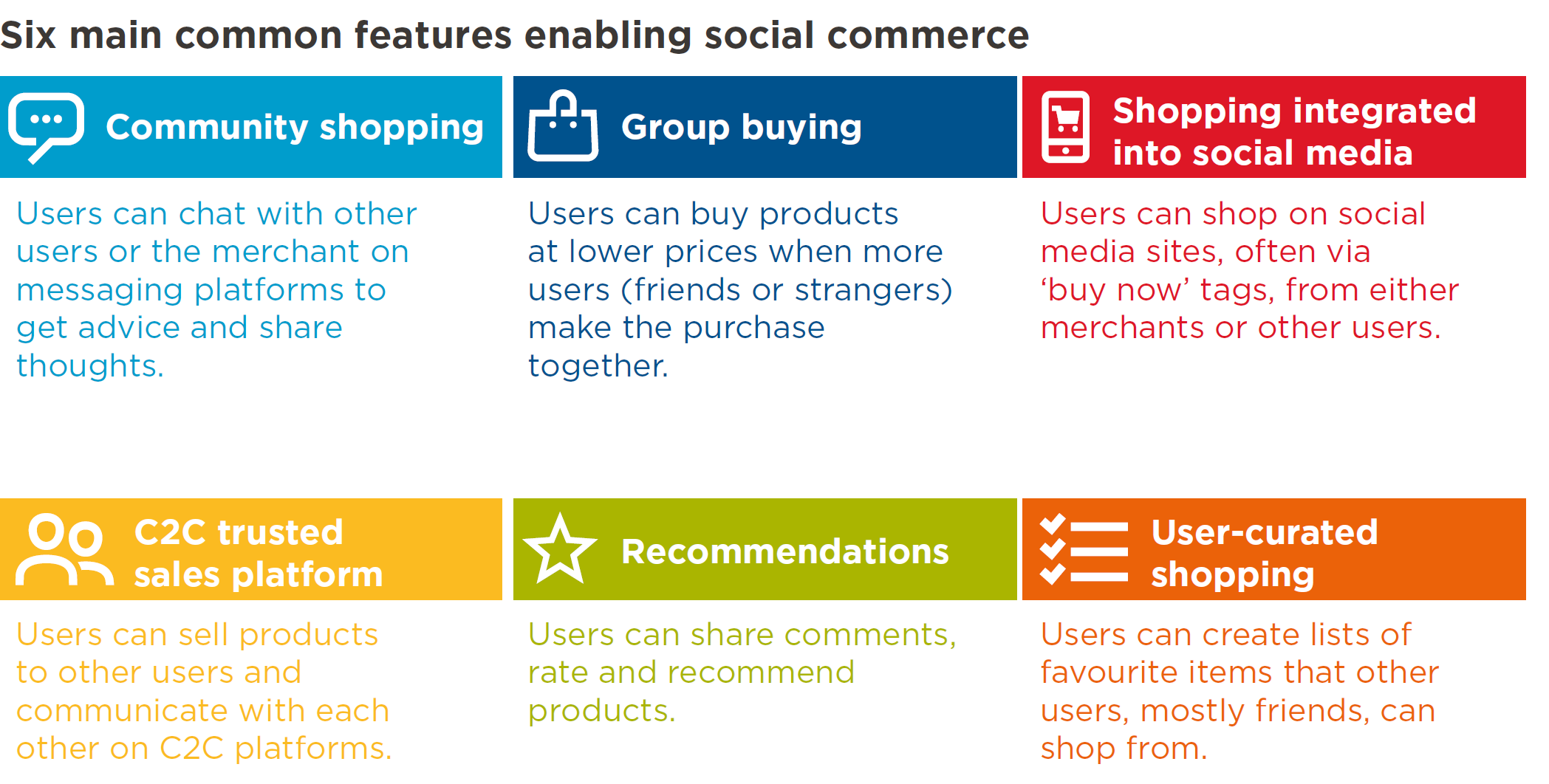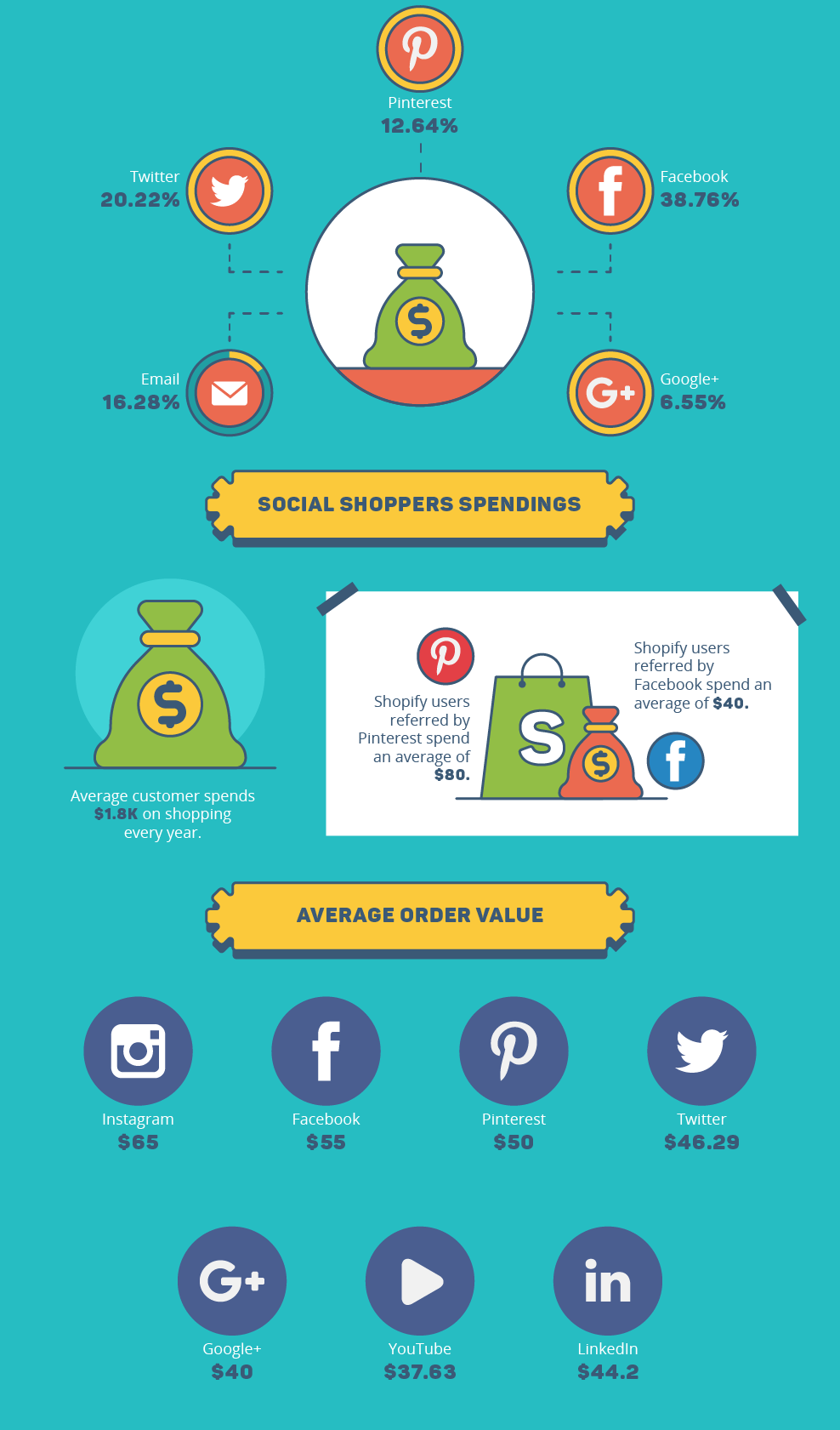February 12, 2020
Social Commerce is the Future of Business

Can you remember the last place you saw a product that you purchased online? Dollars to donuts it was probably on a social media feed somewhere. Social commerce is the future of business.
Everyone is buying online, and people are getting ideas from their social accounts. Consider some of these stats for the popular marketing trend:
- 30% of U.S. internet users aged 18 to 34 years old have purchased through social media.
- The percentage of retailers in North America using social media to promote ecommerce doubled in a year’s time—from 17% in 2017 to 33% in 2018.
- 5% of U.S. internet users would like to shop more via social media in the next year.
- Global internet users spent an average of 142 minutes per day on social media in 2018, up from 90 minutes in 2012.
The audience is already there on social media, you just have to know how to reach them. It starts with understanding the concept of social commerce and how it can benefit your business.
What is Social Commerce?
Social commerce is just like it sounds. It’s selling products or services through social media channels. This is not to be confused with social media marketing, which attempts to defer traffic to another site for sales.
With social commerce, the store and entire shopping experience happens without the customer ever leaving the site. It’s dynamic and interactive content that’s paving the way for the future.
More succinctly, social commerce is the employment of social networks in the context of e-commerce transactions. Examples of social commerce include:
- Social shopping tools
- User recommendations and referrals
- Customer ratings and reviews
- Social advertising and applications
- Forums and communities
- Social media optimization
Technologies like augmented reality (AR) have also been integrated into the shopping experience for social commerce.

How Does Social Commerce Work?
There are many benefits to using social commerce for sales and marketing. It’s a more streamlined process than social media marketing, especially when you can enjoy features like autofill payments, chatbot checkouts, and delivery details.
There are fewer clicks and taps for your audience to reach the end goal than with traditional ecommerce through a webstore.
The social commerce journey far exceeds your typical ecommerce purchase. Here’s a quick juxtaposition of the two:
Traditional Website and Online Store
If you have a traditional store, let’s say you receive 10,000 visitors to the site. Of that audience, 25% of people fill out a form and give you their email address. When you send that group an email, 25% of recipients open it.
1% of those people that opened the email click the link. Then one person buys the product/service. That’s an incredible waste of time and money just to make a sale.
There are several steps to the process and if you miss one, you could lose the lead entirely.
Social Commerce
If those same 10,000 people embarked on a social commerce journey, the results would be far different. Let’s start with a messenger chatbot. Of that same group of people, 99% can be messaged through automation. A quick “Hello!!” goes out the second they visit, and the journey commences from there.
Open rates are rather high for chatbots, averaging at 75%. From the group that sees your message and opens it, let’s say 50% click through it. This then leads to 1% of people purchasing something. This results in a total of 35 purchases.

The difference between these two methods is that social commerce is almost completely automated. A business barely has to lift a finger. There are a lot less steps to take when selling through social channels.
Social commerce meets every type of online shopping experience. This includes:
- Convenience
- Shopping as exploration
- Shopping as play (gamification)
- Shopping as entertainment
It delivers more efficiently on all of these touchpoints because it is a more natural extension of continued consumer behavior.







